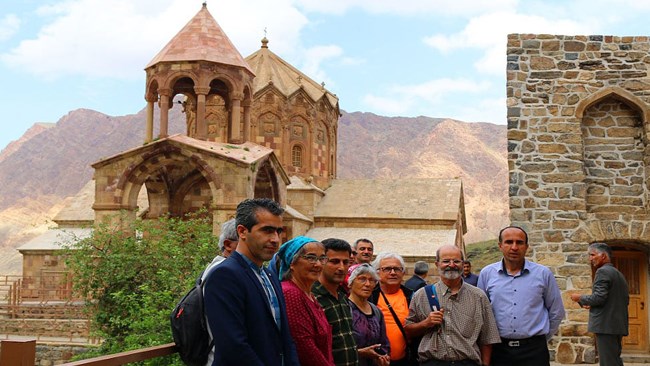
Iran launches Tabriz-Jolfa free tourist train
26 January 2020 - Iran has launched a free tourists train between the northwestern cities of Tabriz and Jolfa. The five-railcar train with the capacity of 400 passengers will carry tourists in both directions on a daily schedule.
“A free tourist train on Tabriz-Jolfa and Jolfa-Tabriz route has been commissioned with the financial assistance from the Araz Free Trade – Industrial Zone in order to develop tourism in the region,” Shapour Arslani, the general manager of the East Azerbaijan railway told Tasnim news agency.
A five-railcar train with the capacity of 400 passengers will carry tourists in both directions daily and is expected to help promote tourism across the region which neighbors Azerbaijan and Armenia.
Jolfa is part of the northwestern East Azarbaijan Province and is located 150 km northwest of the city of Tabriz.
In November 2019, Iran completed an all-inclusive dossier for Aras Geopark in the East Azerbaijan province, with the aim to get it included in the UNESCO’s Global Geoparks list.
The park covers an area of about 1,670 square kilometers, sprawling across the whole Jolfa county. The topography is generally extremely steep and forms astonishing landscapes. The highest point in the Jolfa region is the Kiyamaki mount with 3347 meters, while the lowest points are the northern boundary and the Araz River valley, ranging between 720 and 390 meters.
UNESCO's representatives are expected to visit Aras Geopark in late May 2020 in order to weigh its situation.
Jolfa’s most prominent tourism sites include Saint Stepanos Monastery, Jolfa Water Mill, Kordasht historical bathhouse, Khajeh Nazar (Abbasi) caravansarayand Chapel of Chupan. Several of Jolfa tourism sites have been inscribed on UNESCO's World Heritage List.
The Saint Stepanos Monastery is an Armenian monastery located about 15 km northwest of the city. It is situated in a deep canyon along the Araxes, on the Iranian side of the border between Iran and Nakhchivan. It was originally built in the ninth century, and was rebuilt during the Safavid era, after being damaged through wars and earthquakes.
Kordasht historical bathhouse is a tourist destination famed for intricate geometrical arrangements and spectacular wall paintings. It was constructed at the time of the Safavid king, Shah Abbas (1588-1629), and was later renovated during the reign of Qajar kings to be used as the residence of Abbas Mirza, the son of Fath-Ali Shah (1789-1833).
